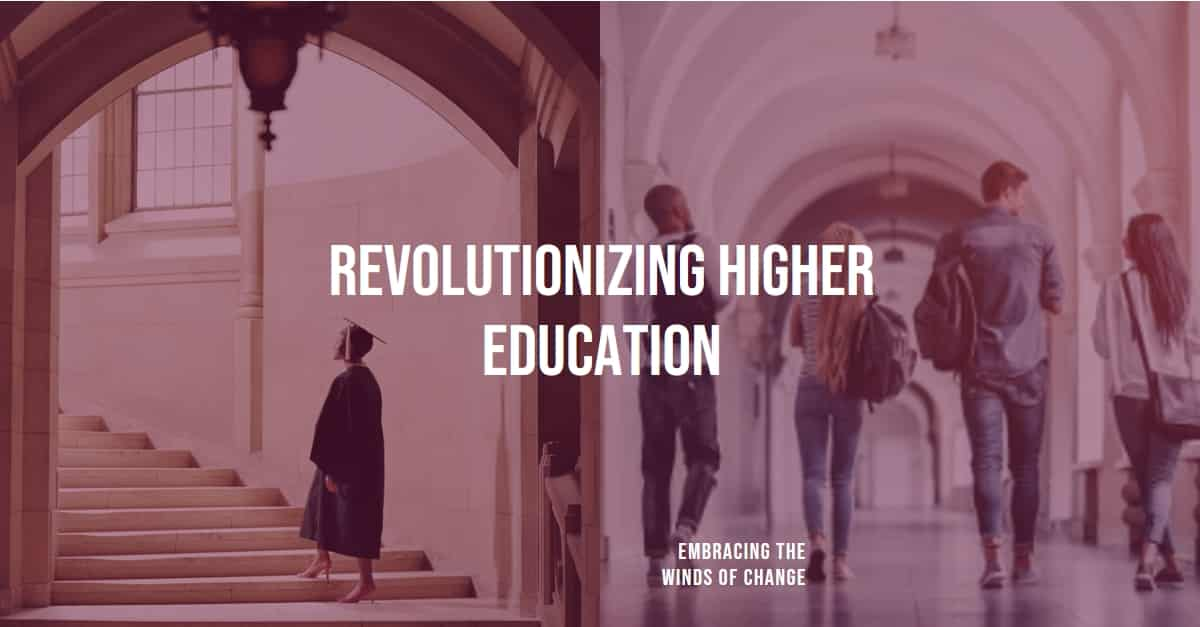
DISRUPTION IN HIGHER EDUCATION – Dr. Clayton Christensen
Summary by Eseigbe S., Alagbe J. & Adunmade, E.
What causes successful companies to fail is rarely that somebody beats them by coming into the market with a better product. It is usually that someone comes at the bottom of the market with a product that may not be as good as that of the successful companies, but rather more affordable. This way, more persons can access and afford their product.
Dr. Clayton Christensen’s discussions on disruption in higher education emphasize the transformative potential of innovative, more accessible and flexible models, with a focus on competency-based learning, affordability, and adapting to the evolving needs of the job market.
Christensen’s core argument revolves around the vulnerability of traditional higher education models to disruptive forces, particularly from online and innovative educational technologies. He contends that these disruptive innovations have the potential to challenge the established norms of education delivery and accessibility.
One key aspect of his discussion is the impact of online learning as a disruptive force. Online platforms, according to Christensen, have the capacity to disrupt traditional classroom-based education by providing content at a lower cost and reaching a broader audience. The convenience and flexibility of online learning challenge the traditional brick-and-mortar institutions, opening up opportunities for learners worldwide.
A significant element in Christensen’s narrative is the modularization of education. He envisions a shift towards a more modular approach, where students can choose specific courses and credentials from various sources rather than following rigid degree programs. This approach aligns with the changing needs of learners and the demands of a dynamic job market.
Some of the key issues highlighted by Dr Clayton include:
- Disruptive Innovation:
Dr Clayton argues that disruptive innovations often emerge from outside the established institutions. Online education and competency-based learning are examples of disruptive forces that can challenge traditional models.
- Online Education:
He highlights the rise of online education as a disruptive force, making learning more flexible, affordable and accessible to a broader range of learners. Which eventually makes education more flexible and tailored to individual needs.
- Modularization of Learning:
The concept of modularization involves breaking down education into smaller, more flexible units. This allows learners to acquire specific skills or knowledge without committing to traditional lengthy degree programs.
- Competency-Based Learning:
Dr Clayton advocates for a shift towards competency-based learning, where students progress based on mastering specific skills or knowledge rather than completing a fixed time-based curriculum. This approach is more adaptable to individual learning styles and paces.
- Job Market Alignment:
Disruptive education models focus on aligning education with the needs of the job market. Competency-based learning can be more responsive to changing industry demands, producing job-ready graduates.
- Hybrid Models:
He also acknowledges the potential for hybrid models that combine online learning with face-to-face interactions. This blend allows for the benefits of technology while maintaining some elements of the traditional educational experience.
- Resistance to Change:
One challenge is the resistance of established institutions to adopt disruptive innovations. Existing structures, processes, and cultures in higher education can impede the adaptation of new and more effective models.
- Innovative Partnerships:
Dr Clayton suggests that partnerships between traditional institutions and disruptive innovators could be a way forward. Collaborations could help incorporate new approaches without completely abandoning the strengths of established educational systems.
